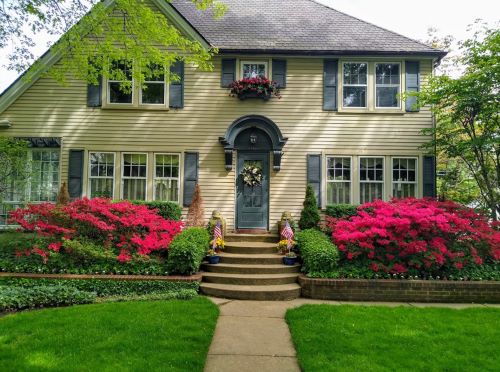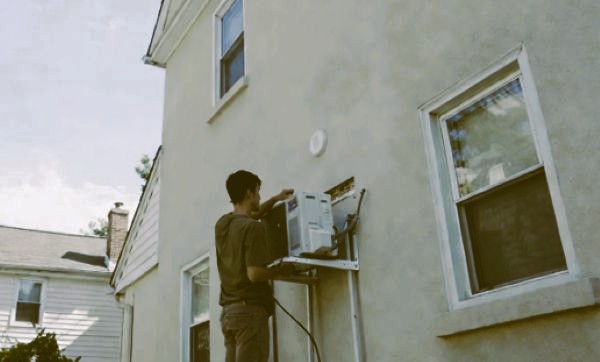

Timing is everything in real estate. The difference between selling at the right time and the wrong time can mean thousands of dollars in your pocket. In 2024, home sellers made $122,500 profit on average nationwide – but only if they timed the market correctly.
Here’s the problem:
Most homeowners have no clue when the best time to sell actually is. They just throw their house on the market whenever they feel like it and hope for the best.
That’s a huge mistake.
What you’ll discover:
- Market Timing Fundamentals
- Seasonal Selling Strategies
- Economic Indicators to Watch
- Local Market Analysis
- Maximizing Your Profit Window
Market Timing Fundamentals
Timing the real estate market isn’t just about picking a random month and hoping it works out.
There’s actual science behind it.
The housing market follows predictable patterns throughout the year. Understanding these patterns gives you a massive advantage over other sellers who are just winging it.
Smart sellers know that market timing involves multiple factors working together:
- Seasonal buyer demand
- Interest rate movements
- Local inventory levels
- Economic conditions
- Regional market trends
When these factors align in your favor, you can capture significantly more profit than selling at the wrong time. Homes listed in late May 2024 sold for 1.6% more than other times of the year.
That might not sound like much, but on a $350,000 home, that’s an extra $5,600 just for timing it right.
Spring: The Golden Season
Spring is when the real estate market comes alive.
Here’s why: Families with kids prefer to move during summer break. The weather is nice for house hunting. Buyers who waited out the winter are ready to make decisions.
March through May consistently delivers the highest prices and fastest sales. But there’s a catch…
Everyone knows this.
Because spring is so popular with sellers, inventory spikes. More competition means you need to work harder to stand out. Your house better be in perfect condition and priced aggressively.
The sweet spot for spring selling is getting your house on the market in late February or early March. You beat the rush but still catch the wave of motivated buyers.
Summer: Peak Activity But Higher Competition
Summer brings maximum buyer activity, especially June and July.
Buyers are out looking every weekend. Kids are on summer break. The weather is perfect for moving.
But here’s what most sellers don’t realize…
Summer also brings peak competition.
Inventory levels hit their highest point. Your house is competing with dozens of others in your price range. Unless you have something special to offer, you might get lost in the shuffle.
Summer works best if:
- Your house has standout curb appeal
- You’re in a highly desirable school district
- You have premium features (pool, large yard, etc.)
- You’re willing to price aggressively
Fall: The Smart Money Play
Fall is the most underrated selling season.
Most sellers assume the market dies after summer. They’re wrong.
Serious buyers are still out there in September and October. These buyers tend to be:
- Corporate relocations that can’t wait
- Empty nesters downsizing
- Investors looking for deals
- Buyers who lost out in bidding wars all summer
The competition is way lower. Motivated buyers have fewer options. If you’re selling your Clearwater house during fall, you might have a serious advantage over sellers who waited for spring.
Winter: Contrarian Strategy
Winter selling is not for everyone, but it can be incredibly profitable for the right property.
The buyers who are looking in December and January are serious. They’re not just browsing on sunny Sunday afternoons. They have a reason they need to buy NOW.
Winter works best for:
- Starter homes under $300,000
- Investment properties
- Houses with great indoor features
- Properties in warm-weather markets
The key is pricing it right from day one. Winter buyers are looking for value, not overpriced listings that have been sitting around since summer.
Economic Indicators You Can’t Ignore
Smart sellers watch more than just the calendar.
Interest rates are the biggest factor most people overlook.
When rates are rising, buyers get squeezed out. When they’re falling, demand explodes. Keep an eye on Federal Reserve announcements and mortgage rate trends.
Employment numbers matter too. High unemployment = fewer qualified buyers. Job growth = more demand for housing.
Inflation affects buyer psychology. When prices are rising everywhere, real estate looks like a hedge.
Local Market Analysis: Your Secret Weapon
National trends are nice to know, but your local market is what actually matters.
Here’s what to research:
Major employers – are they hiring or laying off? New construction projects – how much inventory is coming online? School ratings and recent changes affecting desirability.
Your real estate agent should provide a Comparative Market Analysis (CMA) showing recent sales, current inventory, average days on market, and price trends.
Don’t just rely on Zillow estimates. Get real data from someone who knows your area.
Inventory Levels: Supply and Demand 101
This is basic economics, but most sellers ignore it.
Low inventory = seller’s market. High inventory = buyer’s market.
Check how many homes are currently for sale in your price range and area. If there are only 2-3 similar properties, you have pricing power. If there are 15-20, you need to be more competitive.
The “months of supply” metric tells the whole story. Less than 3 months = strong seller’s market. 3-6 months = balanced market. More than 6 months = buyer’s market.
Time your listing for when inventory is lowest in your area.
Maximizing Your Profit Window
Once you’ve identified the right timing, execution becomes critical.
Preparation is everything.
Get your house market-ready 30 days before listing. Complete repairs, stage properly, and get professional photos taken.
Price it strategically from day one. Overpricing rarely works. Price to sell quickly and create multiple offers.
Market aggressively during your first two weeks. That’s when you get maximum exposure and competitive bidding.
The Bottom Line on Market Timing
Perfect timing can add thousands to your sale price, but don’t get paralyzed trying to time it perfectly.
The best time to sell is when you’re ready – financially and emotionally.
If you need to sell in winter, price it right and market it aggressively. If you can wait for spring, get everything ready during winter so you can list early.
The biggest mistake is sitting on the sidelines waiting for the “perfect” market that may never come.
Putting It All Together
Timing the real estate market for maximum profit comes down to understanding patterns, watching key indicators, and executing a solid plan.
Spring offers the highest prices but maximum competition. Summer brings peak activity but crowded inventory. Fall provides serious buyers with less competition. Winter rewards aggressive pricing and motivated sellers.
Watch interest rates, employment numbers, and local inventory levels. Get your house market-ready before you list. Price it strategically from day one.
The market will never be perfect, but with the right timing and execution, you can maximize your profit no matter when you decide to sell.


